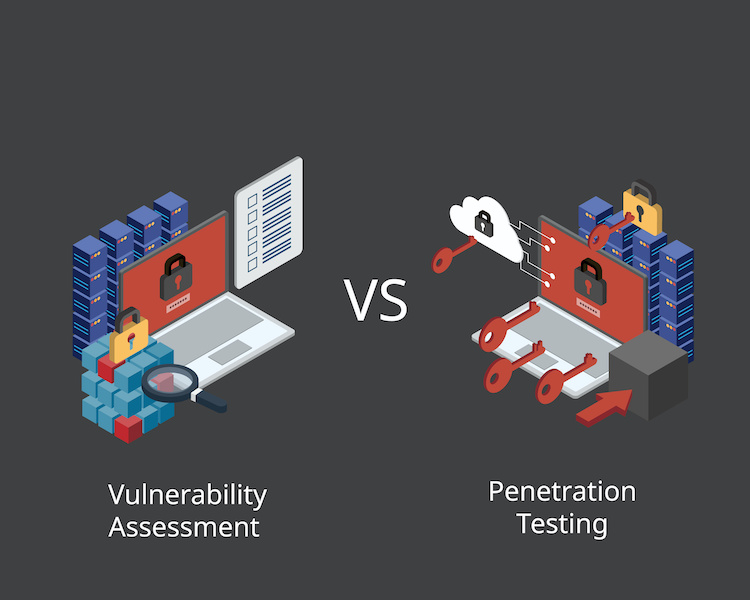
Understanding the Difference Between Penetration Testing and Vulnerability Scanning
In the realm of cybersecurity, penetration testing and vulnerability scanning are pivotal for safeguarding digital assets. Yet, these terms are often used interchangeably, causing confusion. This blog post serves as a compass, guiding you through the intricate difference between penetration testing and vulnerability scanning. We’ll navigate the dynamic world of ethical hacking, contrasted with the systematic approach of vulnerability detection. Through a fusion of technical insights and approachable language, we aim to demystify these terms and empower you to make informed cybersecurity assessment decisions.
Penetration Testing
At its core, penetration testing is a dynamic exercise that seeks to uncover vulnerabilities from a holistic perspective. Ethical hacking evaluation, red team engagements, and other methodologies under the penetration testing umbrella are like staging a controlled cyberattack on your own systems. Skilled ethical hackers, often referred to as white-hat hackers, emulate real-world adversaries to identify vulnerabilities that could be exploited.
Penetration testing involves meticulous planning, exploiting vulnerabilities, and evaluating how your organization’s defenses respond. It provides a comprehensive understanding of potential risks and helps in assessing how well your organization is prepared to thwart cyber threats. This hands-on approach simulates genuine attack scenarios, giving you insights into your cybersecurity posture that automated tools alone can’t provide.
Vulnerability Scanning
Vulnerability scanning, on the other hand, operates systematically and programmatically. It involves using automated tools to scan networks, systems, and applications for known vulnerabilities. While penetration testing mirrors the tactics of real adversaries, vulnerability scanning focuses on identifying existing security weaknesses without actively exploiting them.
These scans are vital for maintaining a proactive cybersecurity strategy. They help you stay ahead by identifying vulnerabilities before they can be leveraged by cybercriminals. Vulnerability scanning tools offer regular assessments, often integrating with your organization’s security protocols, and provide a valuable snapshot of your security landscape.
When to Choose What
The choice between penetration testing and vulnerability scanning depends on your organization’s needs. If you’re seeking an immersive experience that mirrors real-world attacks, penetration testing—such as red team engagements or ethical hacking evaluation—is the way to go. This approach provides insights into how your systems fare against sophisticated adversaries and offers a more comprehensive assessment of your security posture.
Conversely, if your goal is to maintain a consistent overview of existing vulnerabilities, vulnerability scanning is your ally. These automated scans can be scheduled regularly to ensure you’re aware of potential weak points and can address them promptly.
How They Work Together
While penetration testing and vulnerability scanning serve distinct purposes, they are not mutually exclusive. In fact, they complement each other to create a robust cybersecurity strategy. Vulnerability scanning forms the foundation by identifying known vulnerabilities, which can then be explored further in penetration testing. This synergy allows you to address vulnerabilities proactively while also delving deep into the security measures that may not be detected by automated tools.
By combining these approaches, you create a well-rounded defense strategy that accounts for both existing vulnerabilities and potential threats that could emerge in real-world attack scenarios.
The Essence of Cybersecurity Assessment
In essence, the difference between penetration testing and vulnerability scanning lies in their focus and approach. Penetration testing immerses you in the shoes of a cyber adversary, while vulnerability scanning systematically identifies existing weaknesses. Both methodologies play pivotal roles in cybersecurity assessment, contributing to the overarching goal of safeguarding your digital assets.



